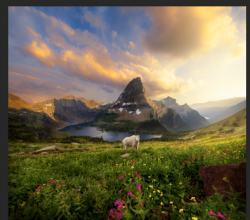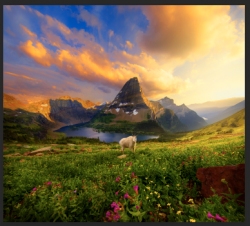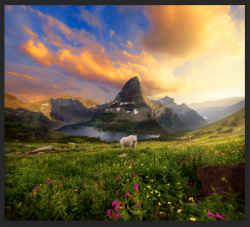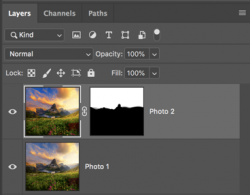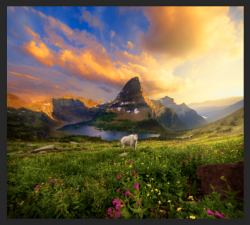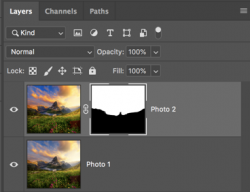There is probably a simple way to do this but I have been going round in circles to try find it.
My aim is to have two layers in Photoshop of the same photo but edited separately in Lightroom (I can do this by opening each from Lightroom and the copy/paste one image to form a layer on the other). So, for example, I could have two versions of the same photo with different exposure levels.
My problem is that I want to selectively "paint" from one layer to the other. I would like to use a brush type tool to selectively copy from one layer. For example when I have a sunrise photo in which everything below the horizon is too dark I could edit one version of the photo for the sky and the second for the land. I could then paint over the layer with the underexposed land from the corrected layer.
I have tried using a Layer mask but when I try to edit the mask all I get is a black and white silhouette showing the selection so I cannot see which parts of the image I am editing.
Is there a tool or simple way to selectively "paint/copy" from one layer to the one underneath it. If I was simply editing in Photoshop (and not Lightroom) I could use the history brush tool to paint from one version to another. But I want each layer edited separately in Lightroom.
I use Photoshop CS3 (but do preliminary editing in Lightroom 5).
My aim is to have two layers in Photoshop of the same photo but edited separately in Lightroom (I can do this by opening each from Lightroom and the copy/paste one image to form a layer on the other). So, for example, I could have two versions of the same photo with different exposure levels.
My problem is that I want to selectively "paint" from one layer to the other. I would like to use a brush type tool to selectively copy from one layer. For example when I have a sunrise photo in which everything below the horizon is too dark I could edit one version of the photo for the sky and the second for the land. I could then paint over the layer with the underexposed land from the corrected layer.
I have tried using a Layer mask but when I try to edit the mask all I get is a black and white silhouette showing the selection so I cannot see which parts of the image I am editing.
Is there a tool or simple way to selectively "paint/copy" from one layer to the one underneath it. If I was simply editing in Photoshop (and not Lightroom) I could use the history brush tool to paint from one version to another. But I want each layer edited separately in Lightroom.
I use Photoshop CS3 (but do preliminary editing in Lightroom 5).

